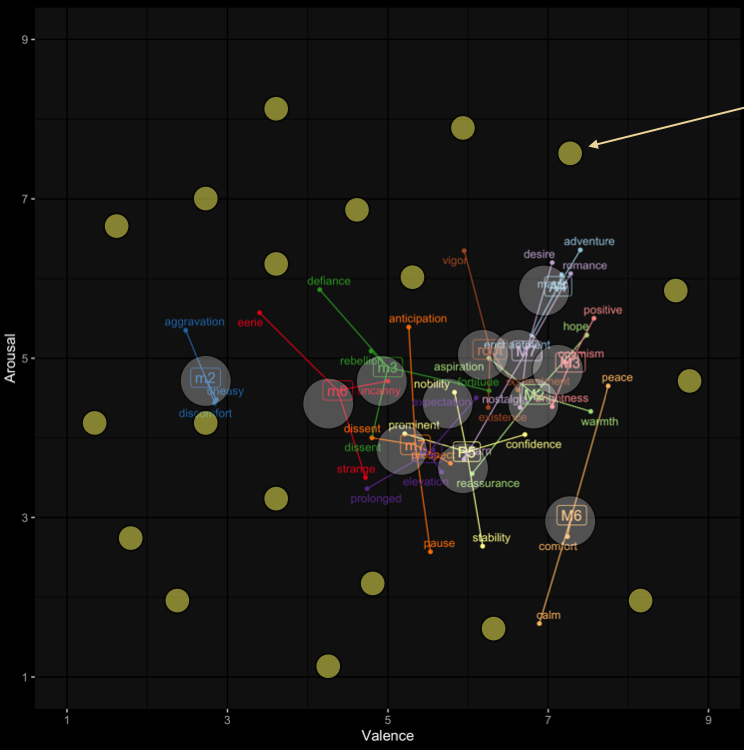Principles
We have a classic mapping problem, where there are a lot of terms and synonyms to represent some moods/feelings/emotions representing music. The idea that specific would convey very specific terms is usually better to conceptualised in a way that there are close synonyms and variants that capture the underlying semantic concept. For this reason, we need to capture the central concept with the suggested terms, but as we are not sure whether these are the optimal, we need to probe this semantic space in a clever way. This is to allow us to come up with a good underlying model of what sentiments the chords represent and not offer a balanced set of alternatives.
In Figure 1 I outline theoretically how this selection scheme would work if we select three candidates from four categories based on distances in the valence and arousal affective space:
- Suggested terms (these are our starting points, what Dennis proposed)
- Close terms (we choose nearby terms)
- Distant terms (we choose terms which are distant)
- Unrelated terms (well, this can be semantically far away)
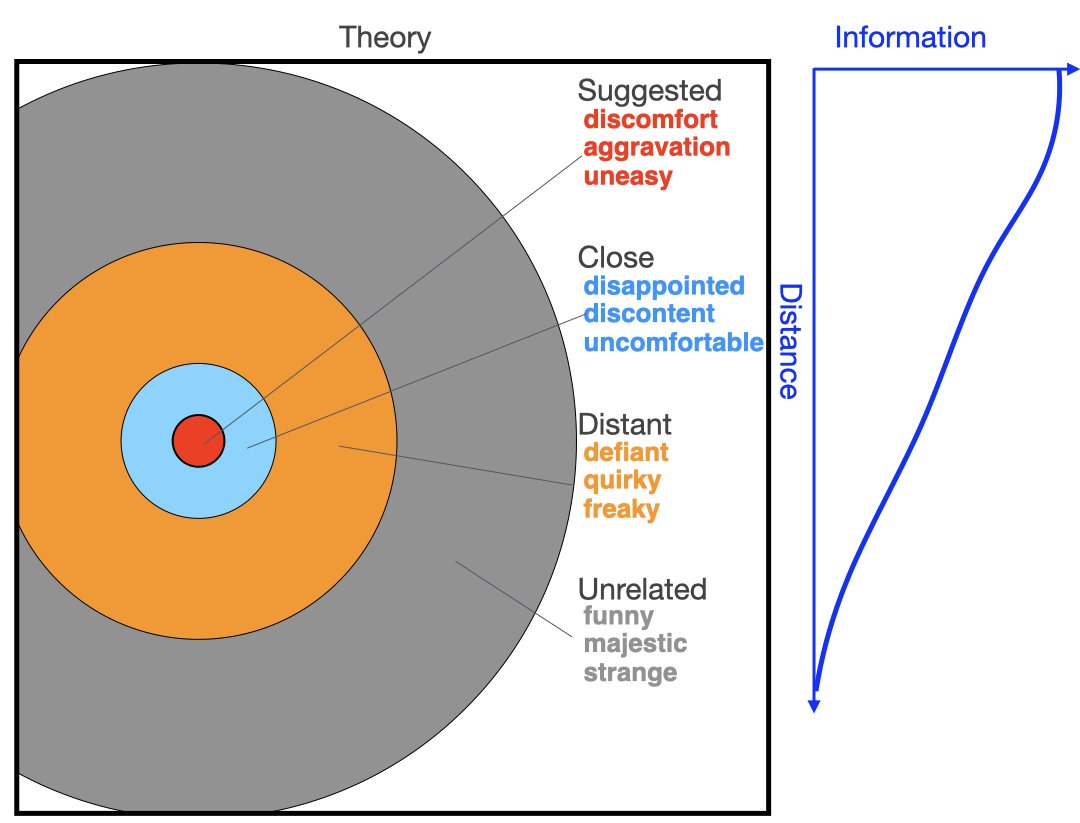
In research terms, this scheme allows us to probe the underlying semantic space in a balanced way. For each chord, we have slightly different set of terms (there can be overlap as well).
Example and term selection scheme
This (Figure 2) is how one chord (Major + m2) maps into the scheme.
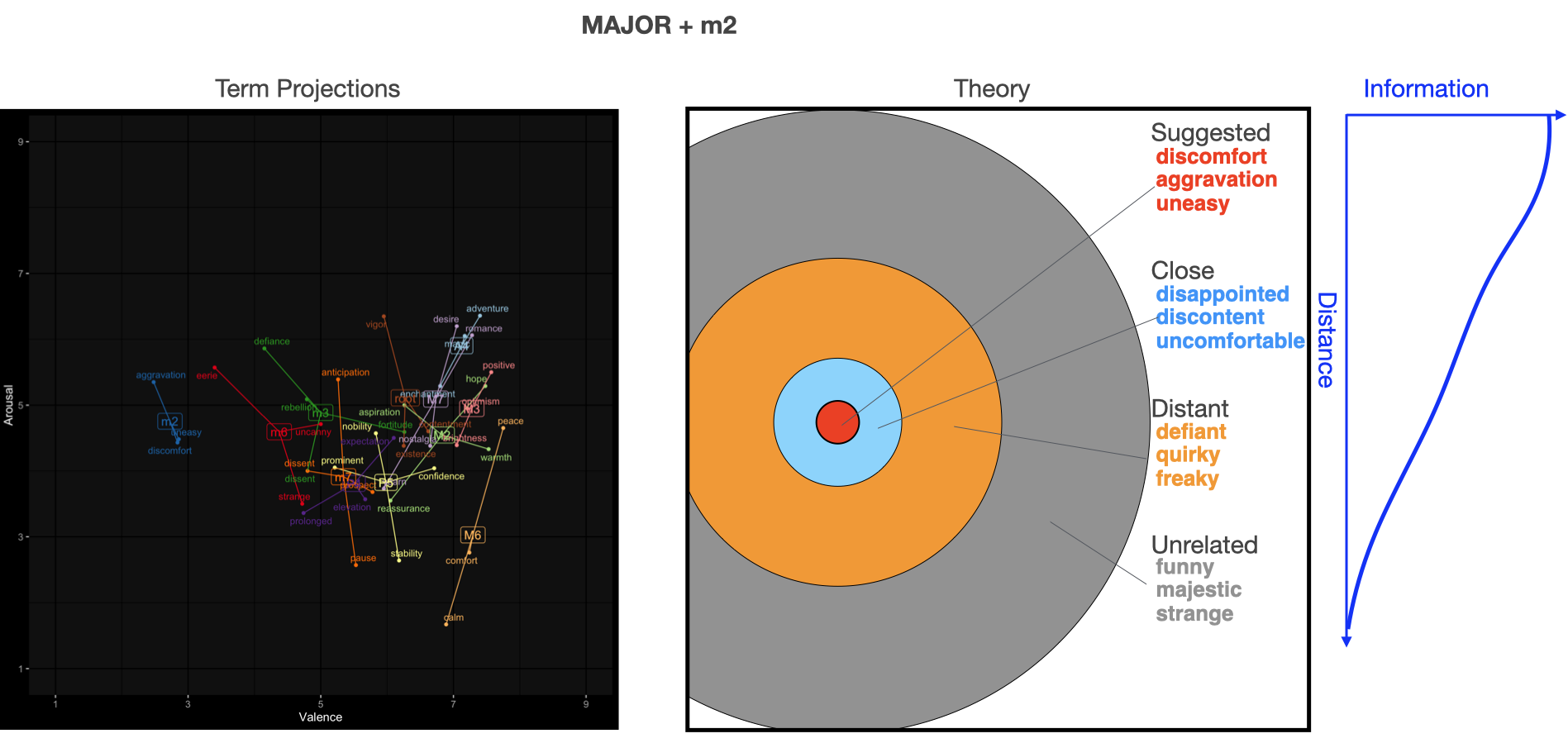
To illustrate how we capture the space
If we use this scheme to probe the full space for each chord, we will have good information about the centre of the chords in the sentiment space, firm information about the suggested and close terms. Figure 3 offers an example what would be covered with 12 chords (Major).
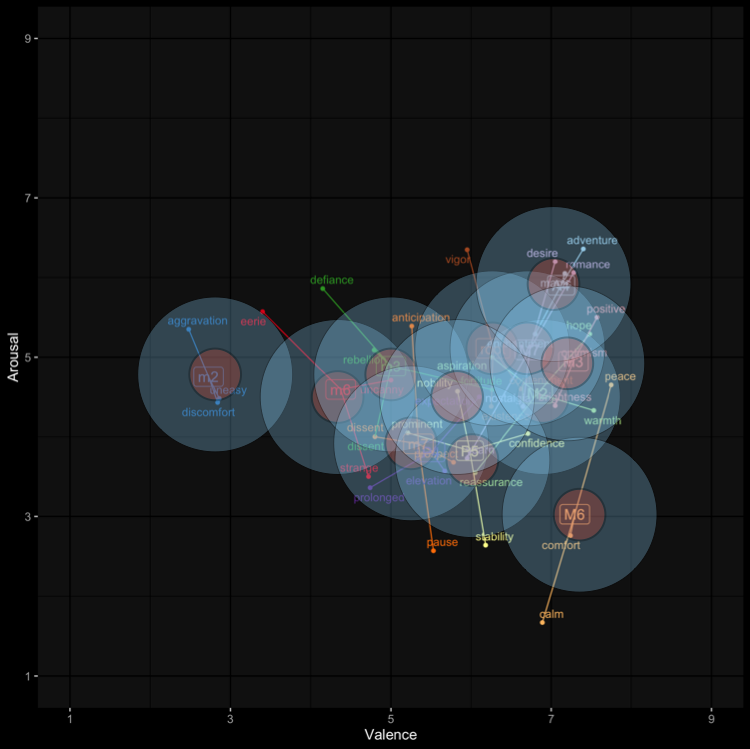
And can do the same for minor.
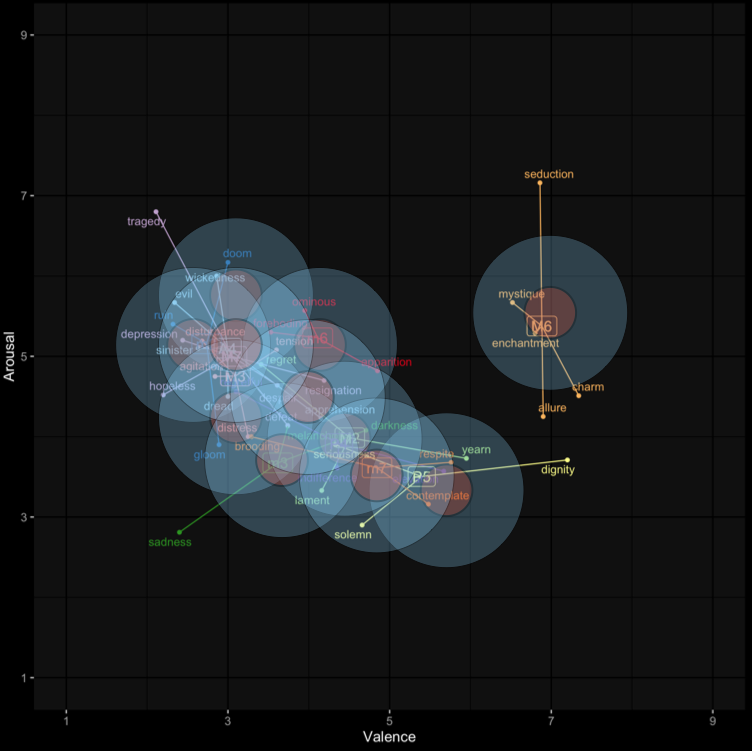
An alternative sampling of the sentiment space
We could just use the 3 candidates selected and then use other terms, either to keep a number of terms fixed or randomise these. Figure 4 shows with yellow dots how these random spots could be dispersed in the semantic space. But then our information is less efficient and only pinpoints exact locations of what works for some chords for some people. This is might much more risky in terms of only getting some of the chords represented and if there is variation in the meanings conveyed by the terms, we might miss the connotations completely.
